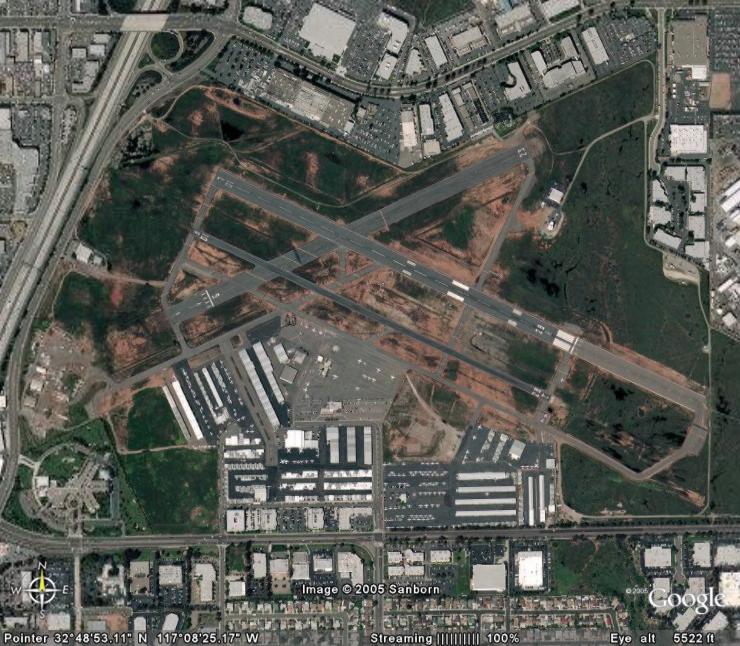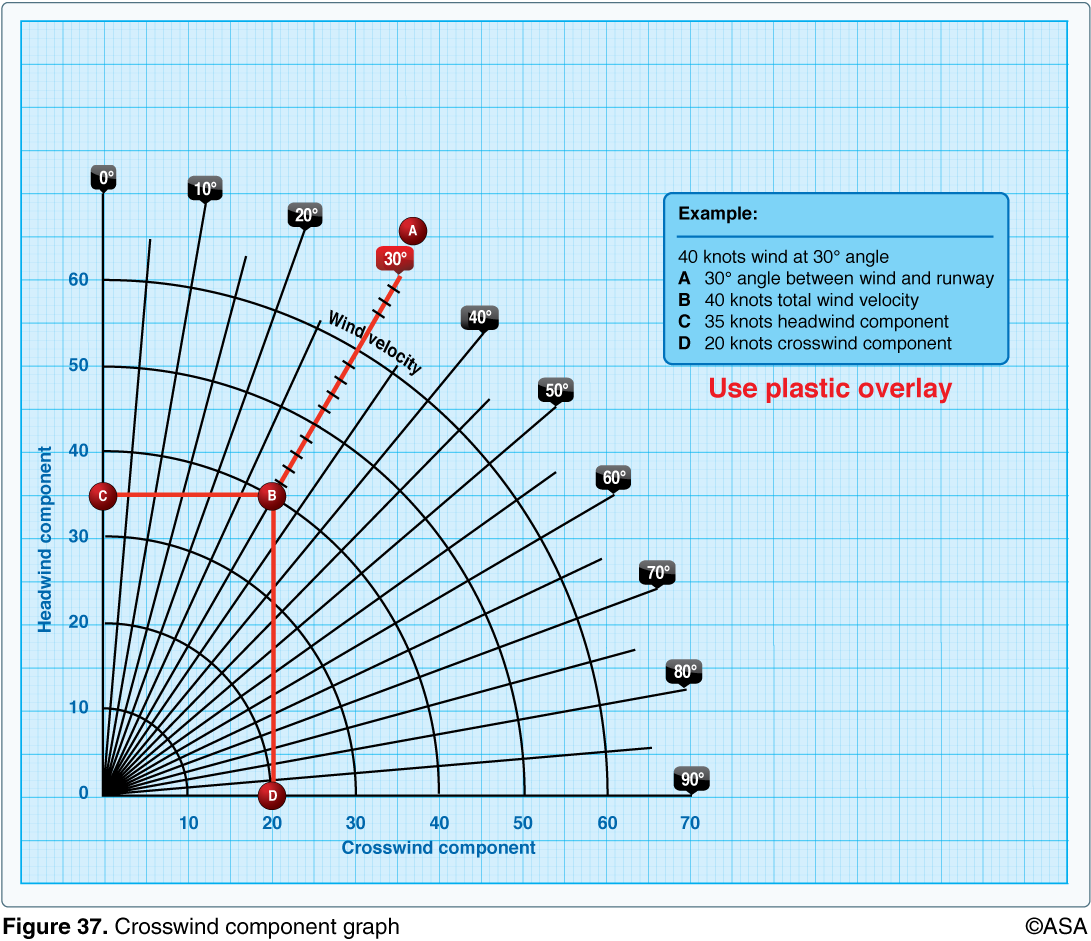This week’s discussion is geared towards the topic of aircraft performance and I thought today would be a great day to talk about crosswinds. The tree blowing across the freeway on my way into the office this morning is probably what gave me the idea. After all, March comes in like a lion and out like a lamb—chances are excellent you’ll have an opportunity to experience some varied winds while flying this month.
In general, taking off and landing into wind improves aircraft performance, and reduces the length of runway required. The stronger the wind, the better the aircraft performs. The opposite can be said for taking off or landing with a tailwind; this greatly decreases aircraft performance and will increase the length of runway required. Runways don’t move so you can’t align them perfectly with the direction wind chooses to blow that day, hence the need for multiple runways at many airports (sometimes referred to as the crosswind runway). As an example, look at the overhead aerial view of KMYF in San Diego below: runways 28L/R and 10L/R are the primary runways in use the majority of the time. During the design process you can be assured that the local trade winds were taken into account prior to determining runway placement (along with a myriad of other factors). Also available is runway 23/5 which can be referred to as the crosswind runway at this airport, or the runway used when the crosswinds on the main runways exceed the airport limitations for use.

Most likely, the wind will not be blowing perfectly straight down the runway centerline and you will have some sort of crosswind on the runway; this is perfectly normal and should be expected. Crosswinds, however, may make the aircraft difficult or impossible to control. The aircraft manufacturer determines the safe limits for taking off or landing with a crosswind and establishes the maximum demonstrated crosswind component. For example, a typical crosswind component for a Cessna 172 may be 15 knots—anything greater than 15 knots exceeds the manufacturer’s recommended limitation.
Prior to any departure or arrival, it is your responsibility as the PIC to determine the crosswind component and identify whether takeoff or landing from a particular runway is within an acceptable range. This decision should account for both the manufacturer’s recommendations, as well as your personal minimums. You will establish personal minimums with your flight instructor; these will change throughout your training as your experience with varied winds grows.
The graph shown in FAA Figure 37 is used to determine what extent a wind of a given direction and speed is felt as a headwind and/or crosswind. Let’s try a sample calculation.

Problem:
The wind is reported to be from 070° at 20 knots, and according to ATIS the current runway in use is 10L/R at KMYF. Is this runway acceptable or would crosswind runway 5 be a better alternative? (Note: maximum demonstrated crosswind for your aircraft is 13 knots).
Solution:
To solve this problem we will need to find the headwind/crosswind component for both runways.
RUNWAY 10 SOLUTION
- Determine the angular difference between the wind direction and the runway: 100° (runway) – 70° (wind) = 30° (angular difference)
- Find the intersection of the 30° angle radial line and the 20-knot wind speed arc on the graph shown in FAA Figure 37.
- From the intersection move straight down to the bottom of the chart and read that the crosswind component equals 10 knots. From the point of intersection move horizontally left and read that the headwind component equals about 18 knots.
RUNWAY 5 SOLUTION
- Determine the angular difference between the wind direction and the runway: 50° (runway) – 70° (wind) = 20° (angular difference)
- Find the intersection of the 20° angle radial line and the 20-knot wind speed arc on the graph shown in FAA Figure 37.
- From the intersection move straight down to the bottom of the chart and read that the crosswind component equals 7 knots. From the point of intersection move horizontally left and read that the headwind component equals about 19 knots.
Crosswinds for both runways have been determined and both fall within the 13-knot maximum demonstrated crosswind component for my aircraft. The crosswind component on runway 5 however is 3-knots less than on runway 10. So what it really comes down to is your personal minimums you’ve set for yourself. Which runway do you, as the PIC, feel more comfortable landing on? If you have set a personal minimum of 8-knot maximum crosswind then runway 5 would be your choice. Even though ATIS states runway 10L/R is in use, it’s acceptable to ask tower for landing on an alternate available runway if you so choose.
On the Private Pilot knowledge exam, the FAA will be looking for a more definitive answer; they will always want you to choose the runway with the least amount of crosswind. So try your hand at answering this sample test question from the Private Pilot exam.
(Refer to Figure 37.) With a reported wind of south at 20 knots, which runway (10, 14, or 24) is appropriate for an airplane with a 13-knot maximum crosswind component?
A—Runway 10
B—Runway 14
C—Runway 24
You can find the correct answer in the comments section of this post.
Want to get new Learn to Fly Blog posts delivered straight to your inbox the moment they’re published? Sign up to our new email subscription service on top of the sidebar to the right! You’ll only get new Learn to Fly Blog posts and we won’t share your email address with anyone ever. Thanks for reading the Learn to Fly Blog!




